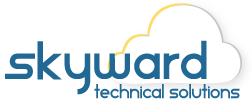Effective IT Asset Management Strategies
In today’s fast-paced business environment, asset management is crucial for small businesses. Proper management of IT assets and inventory ensures that your IT infrastructure runs smoothly, reduces costs, and enhances productivity. Here are some strategies to help you manage your IT assets and inventory effectively.
Implementing an IT Asset Management (ITAM) system is essential for tracking and managing your IT assets throughout their lifecycle. This system helps you keep an accurate inventory of hardware and software, track asset performance, and manage warranties and licenses. By implementing an ITAM system, you can reduce costs by avoiding unnecessary purchases, improve efficiency by streamlining processes and reducing downtime, and ensure compliance by keeping track of software licenses and vendor agreements.
Conducting regular audits and inventory checks is vital for maintaining an accurate record of your IT assets. These checks help you identify discrepancies, such as missing or outdated equipment, and ensure that your records are up-to-date. Regular audits can also help you identify security risks by detecting unauthorized devices or software, optimize asset utilization by ensuring that all assets are being used effectively, and plan for upgrades by identifying assets that need to be replaced or upgraded.
Using automated tools can significantly enhance your IT asset management process. These tools can help you track assets in real-time, generate reports, and automate routine tasks such as software updates and patch management. Benefits of using automated tools include increased accuracy by reducing human error, time savings by freeing up your IT staff to focus on more strategic tasks, and better decision-making by providing access to real-time data and analytics.
Having clear policies and procedures in place is essential for effective IT asset management. These policies should cover asset acquisition, usage, maintenance, and disposal. Key elements to include in your policies are asset tagging to ensure all assets are tagged with unique identifiers for easy tracking, usage guidelines to define how assets should be used and maintained by employees, and disposal procedures to establish protocols for the secure disposal of outdated or damaged assets to protect sensitive data.
Training your staff on IT asset management best practices is crucial for ensuring compliance with your policies and procedures. Regular training sessions can help employees understand the importance of proper asset management and how to use the tools and systems you have in place. Benefits of staff training include improved compliance by ensuring that employees follow established policies and procedures, enhanced security by educating staff on the importance of securing IT assets and data, and increased efficiency by empowering employees to manage and use IT assets effectively.
Continuous monitoring and review of your IT asset management processes are essential for identifying areas for improvement. Regularly review your ITAM system, policies, and procedures to ensure they remain effective and up-to-date. Monitoring and review can help you adapt to changes by staying ahead of technological advancements and changing business needs, identify issues early by detecting and addressing potential problems before they escalate, and measure performance by tracking key performance indicators (KPIs) to assess the effectiveness of your IT asset management strategy.
Effective IT asset and inventory management is critical for small businesses to maintain operational efficiency, reduce costs, and ensure compliance. By implementing an ITAM system, conducting regular audits, using automated tools, establishing clear policies, training staff, and continuously monitoring and reviewing your processes, you can manage your IT assets more effectively. These strategies will help you optimize your IT infrastructure and support your business’s growth and success.











Leave a Reply